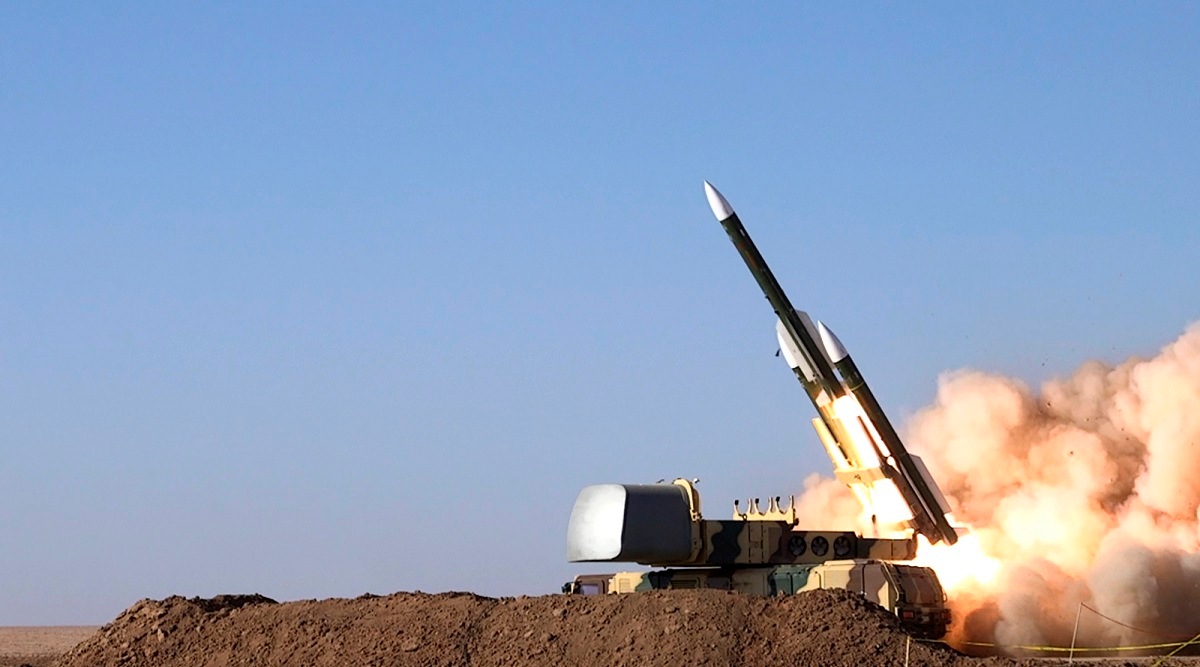 China’s pursuit of hypersonic missiles is neither new nor surprising. (AP/File)
China’s pursuit of hypersonic missiles is neither new nor surprising. (AP/File) On October 27, General Mark Milley, Chairman of the Joint Chiefs of Staff of the US, reacted to China testing its nuclear-capable hypersonic weapons system by drawing an analogy with a supposedly similar event that happened 64 years ago: “I don’t know if it’s quite a Sputnik moment, but I think it’s very close to that. It has all our attention.” The ambivalence in the general’s remarks was spot-on as the Chinese tests, conducted this summer, are in no manner analogous to the Sputnik satellite test. Yet, they are likely to trigger events similar to those that the Sputnik launch set in motion.
The Sputnik launch by the Soviet Union in 1957 was viewed as a symbol of American weakness and a sign of Soviet superiority in technology, both by the people and policymakers in the US. The shock was exacerbated by the suddenness of the event, with US intelligence agencies being taken by complete surprise. In contrast, China’s pursuit of hypersonic missiles is neither new nor surprising. Since the US withdrawal from the Anti-Ballistic Missile (ABM) treaty in 2002, both Russia and China have been wary of Washington’s Ballistic Missile Defence (BMD) programme.
Missile defence is inherently destabilising — it undermines “strategic stability”, which can be understood as the inability of a nuclear-armed state to execute a first strike, leaving it vulnerable to a retaliatory second strike by the adversary. This mutual vulnerability was seen as the bedrock of prolonged peace during the Cold War. A robust BMD would compromise the second strike capability of the adversary by neutralising the surviving incoming missiles in case of a near-decapitating first strike. Both Russia and China thus view the US BMD as undermining their deterrence and have sought ways to restore their retaliatory strike capability by investing in new technologies, most prominently the hypersonic weapons systems, including Hypersonic Glide Vehicles (HGVs) that can escape the missile defence systems.
The recent test would thus calm Beijing, which was worried that the US BMD would block China’s few surviving weapons in case of a US first strike. The test included an HGV with a “fractional orbital bombardment” system, which can hit a target by entering in lower orbit — it can reach the US via the South Pole, where America has few early warning systems. Moreover, HGVs fly at lower altitudes than ballistic missiles, which means they could potentially escape early warning systems, aided by the earth’s curvature. Experts thus consider hypersonic weapons highly destabilising, not due to their speed but because of their stealth and exceptional manoeuvrability.
Despite the absence of a strategic surprise, China’s test could potentially have a Sputnik-like effect. The Sputnik shock drove the Eisenhower administration to seek space arms, triggering a ballistic missile race that saw two superpowers come close to a disastrous faceoff during the Cuban missile crisis. The Chinese tests have the potential to set off an aggressive competition among the nuclear powers to modernise their nuclear arsenals and add new, potentially destabilising capabilities to their arsenal.
Emerging technologies like hypersonic weapons systems impact strategic stability in two ways: They undermine “crisis stability”, thereby incentivising the nuclear first-use and they erode “arms race stability” by encouraging an action-reaction cycle. In the present era of minimal arms control measures, the Chinese hypersonic missile system test will trigger an intense arms race both at the global and regional levels. The US is already developing conventional long-range hypersonic missiles. With the Chinese test, the US may be forced to expand its hypersonic programme and further modernise its missile defence systems.
China’s nuclear-tipped hypersonic weapon systems, though not particularly India-focused, could nudge New Delhi to adopt two courses of action. First, accelerate its hypersonic missiles programme. Second, consider erecting an equally robust missile defence. India is reportedly developing a dual-capable hypersonic cruise missile and an anti-ship hypersonic missile. Chinese advancement in stealth technologies will drive New Delhi to seek similar capabilities but also develop effective countermeasures. This can then set off a regional arms race, a sign that is not particularly encouraging for regional peace.
China’s hypersonic missile test may not have come with a Sputnik-like surprise, but it has the potential to set off a post-Sputnik-like arms race that does not augur well for the strategic stability both at the global and regional level.
The writer is a senior IPS officer and a doctoral scholar at Princeton University. Views are personal
- The Indian Express website has been rated GREEN for its credibility and trustworthiness by Newsguard, a global service that rates news sources for their journalistic standards.

